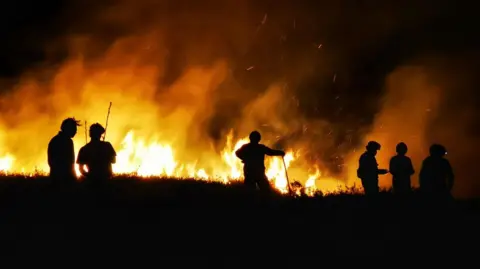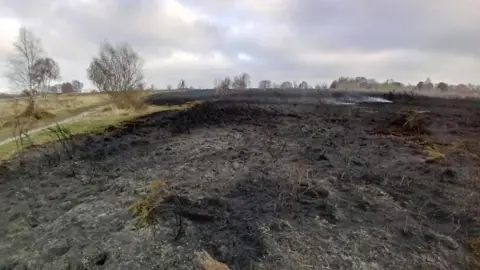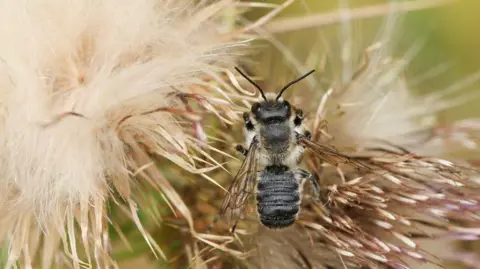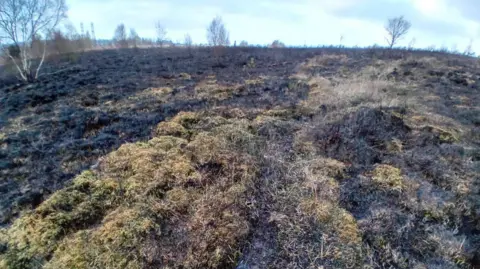Fire warning after heathland blaze kills wildlife
 Wallettography
WallettographyA wildfire that broke out on a protected area of lowland heath is likely to have killed bees, ground-nesting birds and other wildlife, rangers said.
Firefighters dealt with what they described as a "significantly large fire" on about three acres (1.2 hectares) of Gentleshaw Common Nature Reserve on Friday.
Staffordshire Wildlife Trust (SWT) said "much wildlife will have been impacted".
Staffordshire Fire and Rescue Service (SFRS) said the cause of the fire was not yet clear but it was working with police and the trust to find it.
Crews in six fire engines were called to the nature reserve at about 20:00 BST on Friday.
They fought the fire in sections which helped to contain it, a spokesperson said.
The fire was put out at around midnight with further damping down and inspections on Saturday.
SFRS, which dealt with 266 outdoor fires in March, urged people to take extra care outdoors as drier weather continued.
 Staffordshire Wildlife Trust
Staffordshire Wildlife TrustSWT head of nature reserves Jeff Sim said solitary bees, small mammals and reptiles were likely to have died, adding: "Ground-nesting birds including skylark and meadow pipit will have also been victims."
He urged people to play their part by not using barbecues or lighting fires and taking all litter home, and to report outdoor fires immediately.
 Getty Images
Getty ImagesIan Read, head of prevention at SFRS, said last month had seen a large increase in outdoor fires in the county.
"Deliberate and accidental outdoor fires put lives in danger and put a strain on our firefighters," he said.
He urged people getting out into the countryside this weekend to ensure cigarettes were put out properly and not to start fires.
"The dry yet windy conditions are the perfect combination for a fire to rapidly spread," he said.
Mr Read urged people to educate children about the dangers and said: "What might appear as a bit of fun can have very serious consequences."
 Getty Images
Getty Images Staffordshire Wildlife Trust
Staffordshire Wildlife TrustGentleshaw Common, near Rugeley, is a nationally-important heathland site, covering 86 hectares.
It has heather and grasses supporting a wide range of insect and bird life, and stretches from Sutton Park to Cannock Chase.
The reserve includes a wet heathland valley and a sandy haven that is home to solitary mining bees that create the small holes seen on sandy paths.
Follow BBC Stoke & Staffordshire on BBC Sounds, Facebook, X and Instagram.
